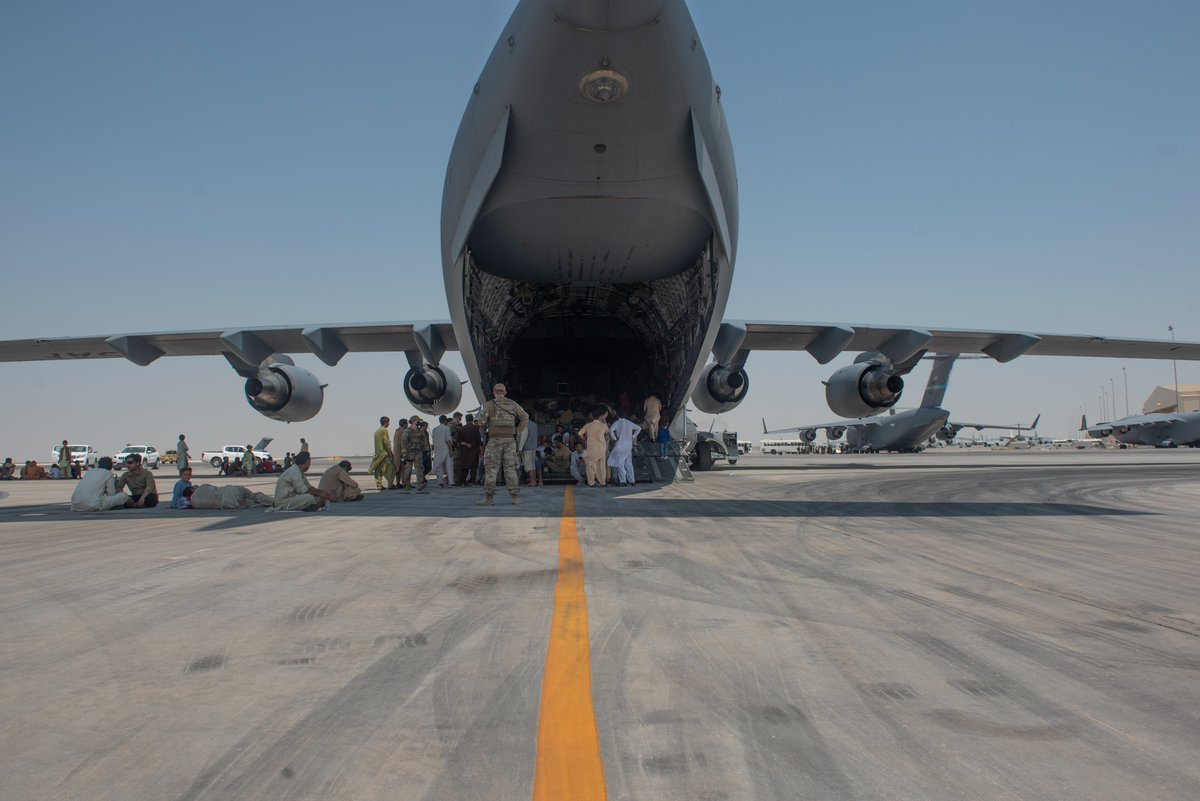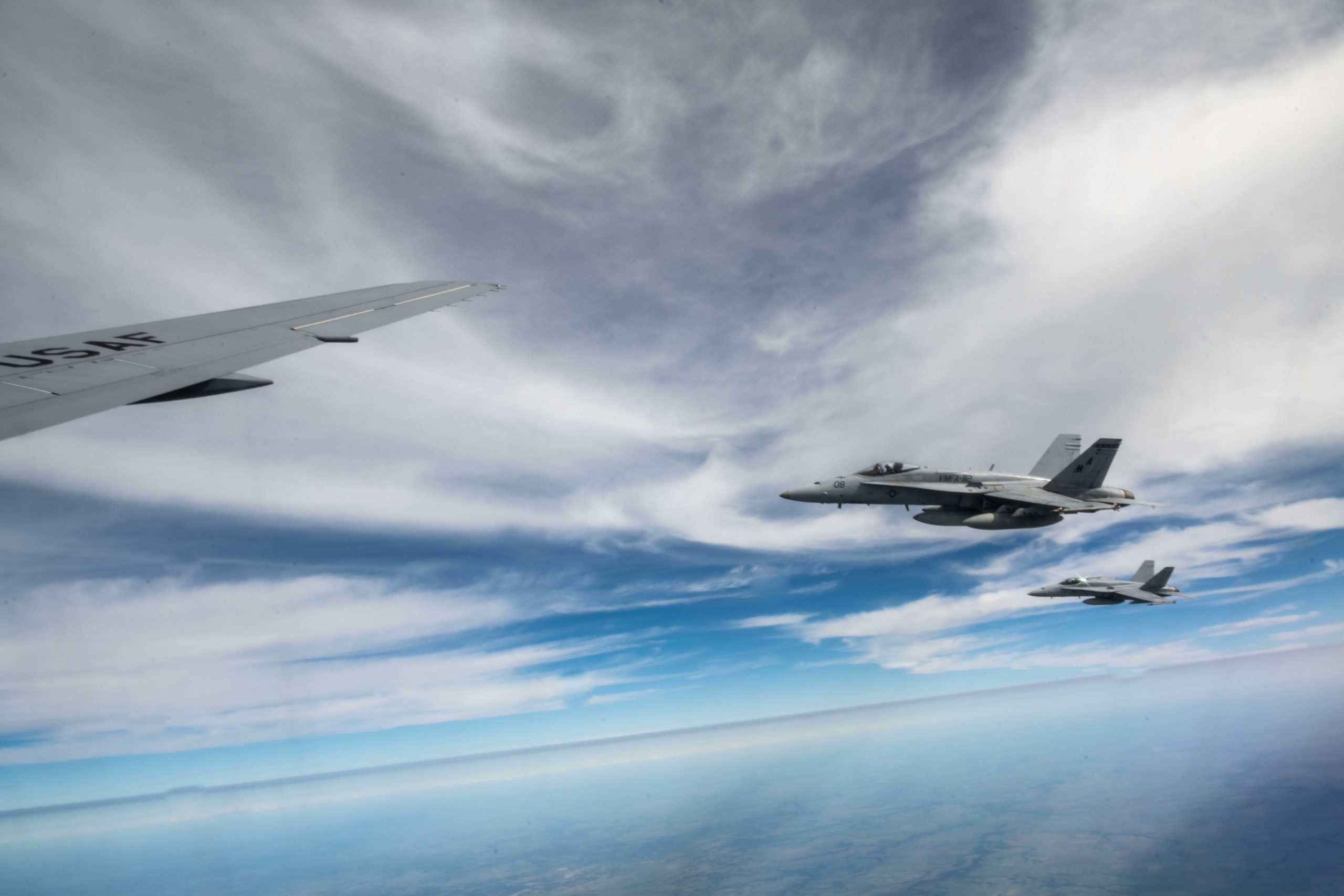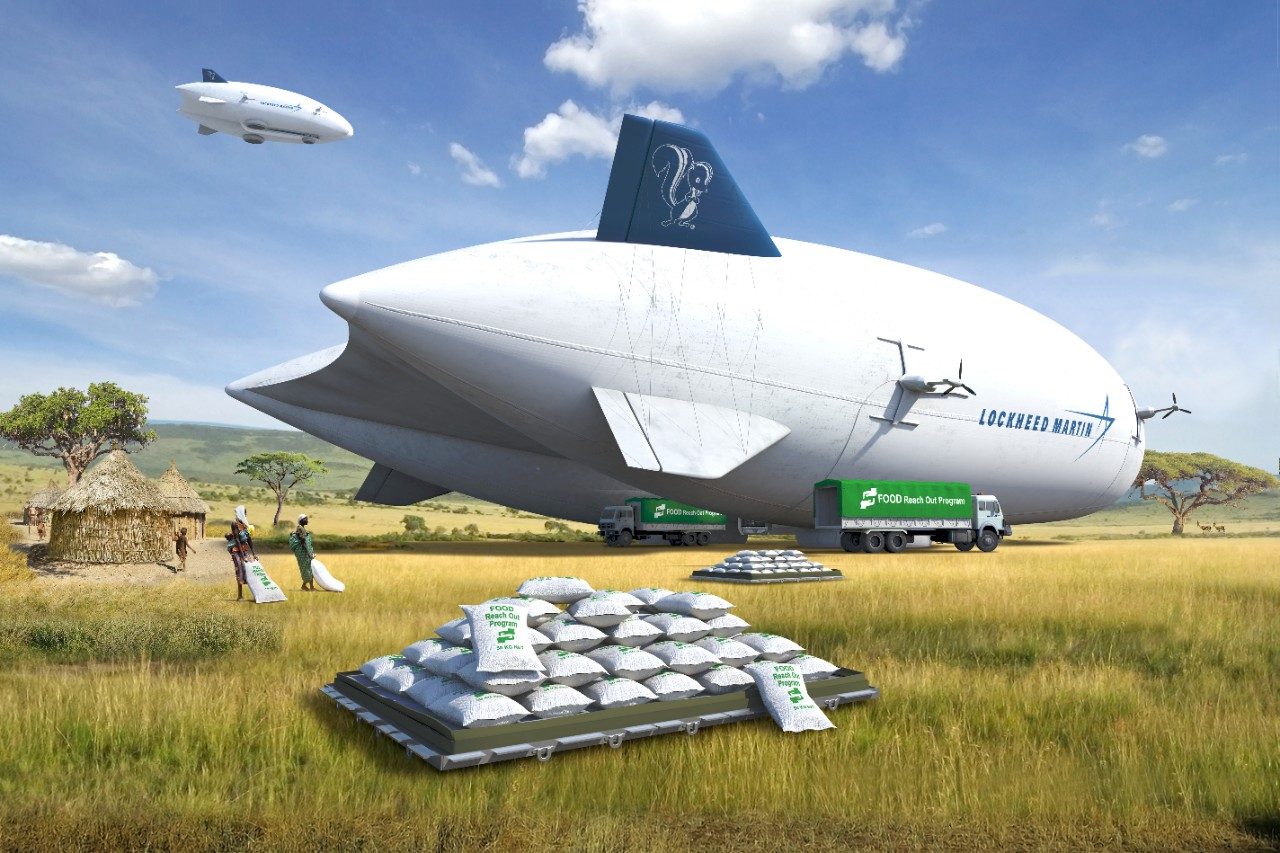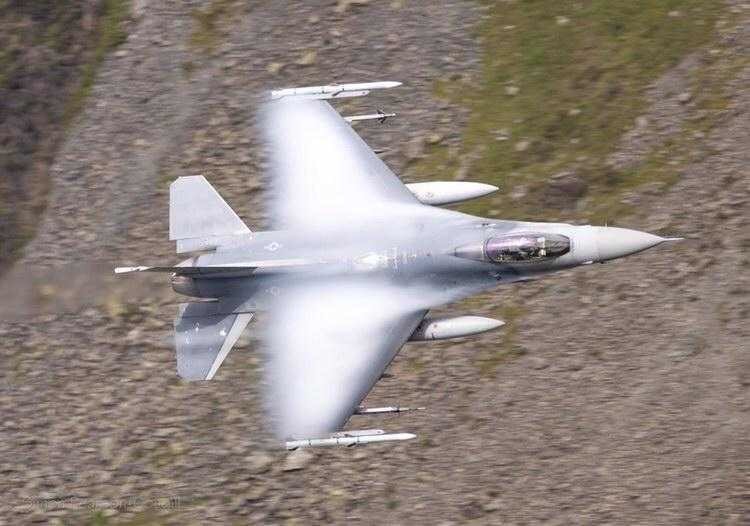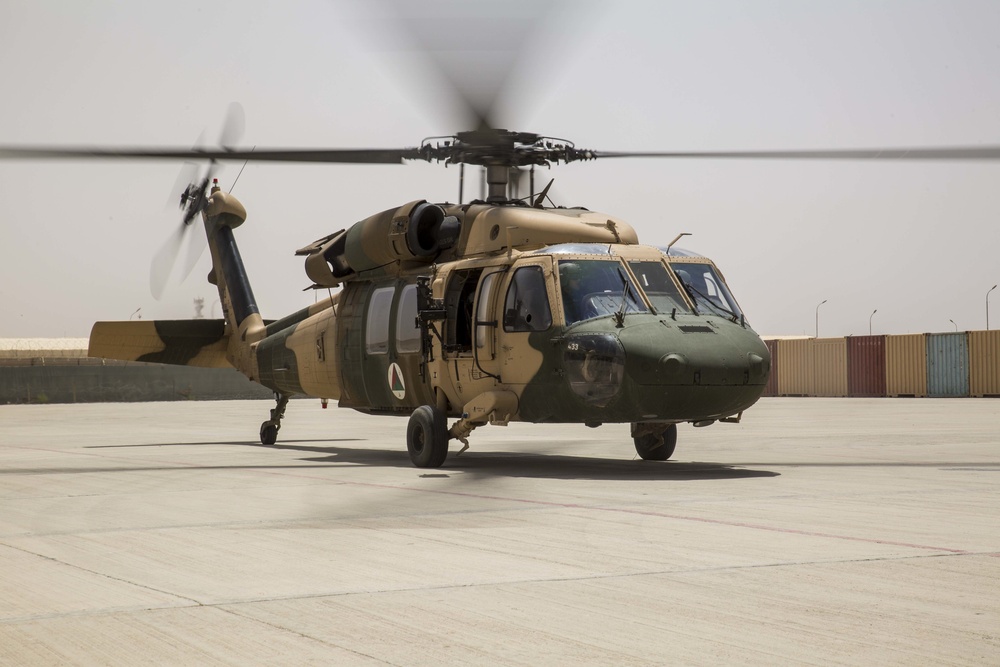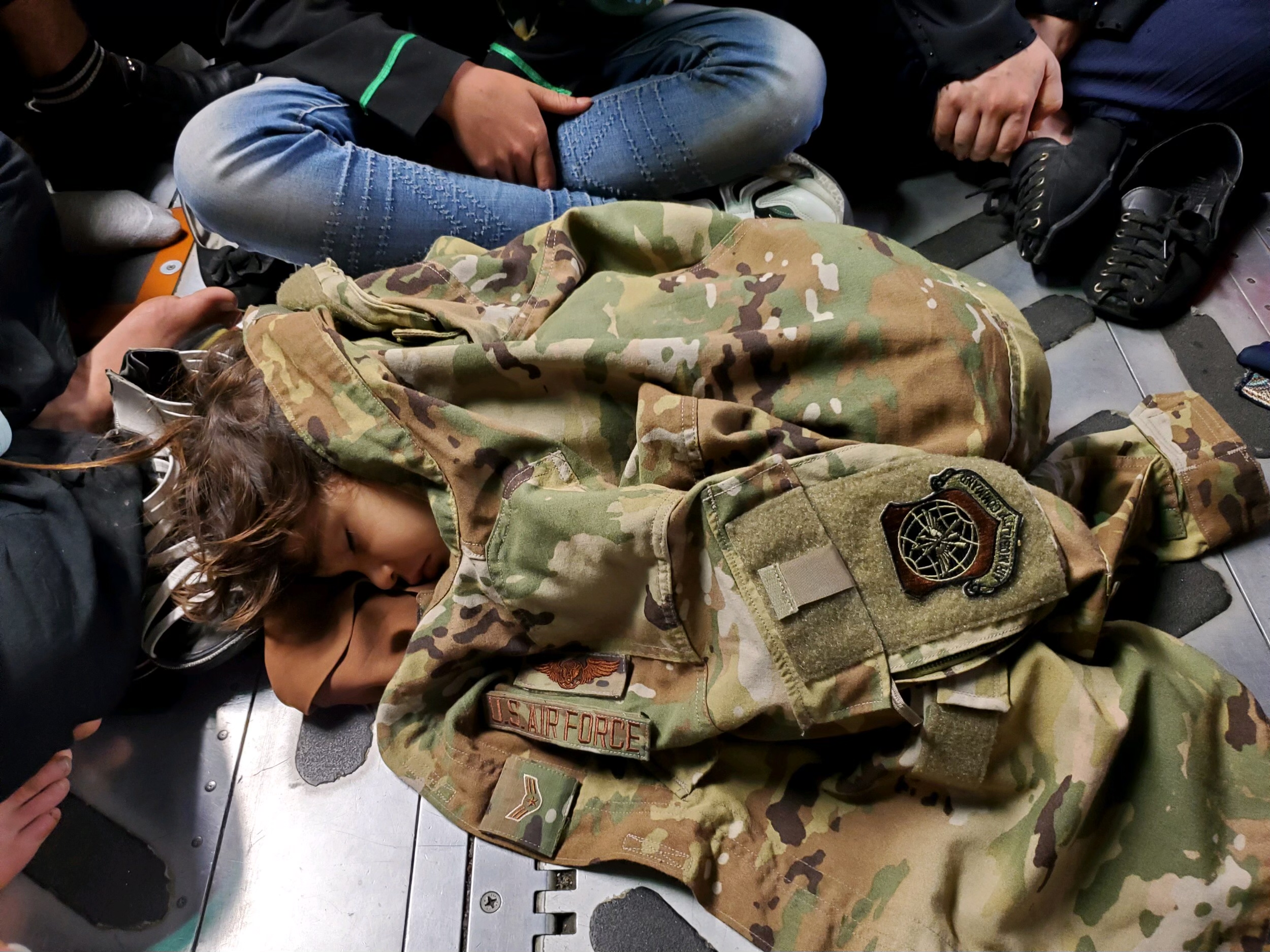Defense Secretary Lloyd J. Austin III on Aug. 22 activated the Civil Reserve Air Fleet to assist with the ongoing airlift out of Afghanistan. Tens of thousands have fled the country.
The Stage 1 CRAF activation includes 18 aircraft—three each from American Airlines, Atlas Air, Delta Air Lines, and Omni Air; two from Hawaiian Airlines; and four from United Airlines, which will fly from staging bases in the region but not from Kabul. It is the third activation in the history of the program, after Operations Desert Shield/Storm in 1990 and Operation Iraqi Freedom.
As of early Aug. 22, 25,100 personnel had flown out of Kabul on military and coalition flights since the evacuation began on Aug. 14. The evacuation airlift out of Kabul halted for several hours Aug. 20 as the staging facility at Al Udeid Air Base, Qatar, hit its capacity limit with several thousand still staged to leave Kabul. Flights had since resumed.
U.S. Air Force crews adjusted their operations to fly even more passengers and are now regularly carrying 400 people as opposed to a previous limit of just over 300 for humanitarian operations, said Brig. Gen. Daniel A. DeVoe, commander of Air Mobility Command’s 618th Air Operations Center, also known as the Tanker Airlift Control Center.
More locations are beginning to accept evacuees, as Al Udeid is at capacity, including Ramstein Air Base, Germany, where Airmen have been setting up cots in hangars and doing other preparations to get ready for the influx of evacuees. The first flights landed there late Aug. 20. Other nations in the Persian Gulf region are in discussions to host evacuees, including Kuwait and the United Arab Emirates, where there are major USAF bases.
Qatar was the “first way station” for the evacuation, and as such it hit capacity quickly, Pentagon spokesman John F. Kirby said in an Aug. 20 briefing.
“We are grateful other countries … have already agreed to accept additional numbers, and we’re working out the details of that with them right now,” Kirby said. “From a military perspective, we are in need of additional capacity, and we’re grateful that other countries are going to be helping us out with that capacity.”
DeVoe said the TACC needs to “meter the flow between locations,” noting, “there are times where certain places could get what we call locked out, or reach capacity limits, to those particular locations, and as we do, we adjust the flow accordingly,” he said.
As of Aug. 20, about 5,800 U.S. troops are at the Kabul airport trying to deal with throngs of people outside the gates hoping to evacuate. Commanders on the ground are in regular contact with Taliban leaders to allow for safe passage, though there are extensive reports of people being beaten and threatened if they attempt to flee.
‘Energize Our System’
DeVoe said the TACC received the order around Aug. 11 that mobility would be in heavy demand and needed to quickly help evacuate U.S. citizens and allies from Afghanistan. He was told, “We need you to energize our system to make that happen.”
The control center surged aircraft to the region, and an element of USAF contingency response Airmen also quickly deployed to help run air operations at the airport, said Col. Kyle Benwitz, vice commander of the 621st Contingency Response Wing. These same Airmen had recently returned home from Afghanistan after closing down bases across the country.
In addition to surging airlift, the TACC increased refueling capacity both in the Middle East and elsewhere in the world to help keep aircraft flowing.
“We have, as this effort kicked off, increased the number of refueling aircraft in the theater, and in other places around the world, to support that global flow and movement of aircraft. They might not be in the Gulf, they might not even be in [U.S. Central Command’s] area of responsibility, but they’re still doing work as part of a global effort to support this evacuation.”
This also includes refuelers carrying some passengers, presumably from the staging locations such as Al Udeid, back to the U.S., or to other locations.
“It’s still putting passengers in seats and accelerating the velocity of moving those evacuees onto follow-on locations,” DeVoe said. “So we’re looking at doing that right now, with some of the tanker support we have.”
USAF Chief of Staff Gen. Charles Q. Brown Jr. took to Twitter on Aug. 19 to thank Airmen for their role in evacuating those from Afghanistan.
The TACC’s plan for airlift operations is keenly focused on fuel for the aircraft that land in Kabul, so the aircraft aren’t depending on the airport’s refueling system to operate. USAF tankers are operating nearby if they need to fill up, if plans change, or if flights take longer than expected, DeVoe said. Other planes, such as from other militaries or private carriers, do rely on HKIA’s fuel at times, and the contingency response Airmen are able to help with that.
“Usually, we’re able to make plans so they don’t even have to hit the tanker,” DeVoe said. “If there’s things that cause delays, that weren’t expected, didn’t go as planned, longer flight times, then we’ll utilize an aerial refueling.”
Turkish troops were running much of the logistics at the airport, but U.S. forces took over when contingency response Airmen arrived, adding some more “rigor and structure” into the operations, Benwitz said. For example, some commercial or contracted aircraft would show up unannounced without the proper “prior permission required” authorization.
Contingency response Airmen at Kabul are handling the bulk of the on- and off-loading operations, along with controlling the aircraft. Benwitz said they are able to handle up to eight aircraft at a time to support a high operations tempo. In addition, some of these Airmen are working with Marines to help manifest passengers to increase throughput, and they are repairing generators, buildings, and lighting to keep the airport operating.
“That is an opportunity, again, to ensure the safe launch and recovery of all these missions that are going through the airfield,” Benwitz said. “We find a problem, we seek solutions, and we get the mission done quietly, as professionals, to ensure that we’re not the cause of any delay.”
Editor’s note: This story was updated at 8:37 p.m. Aug. 22 to add information about the Civil Reserve Air Fleet activation.
